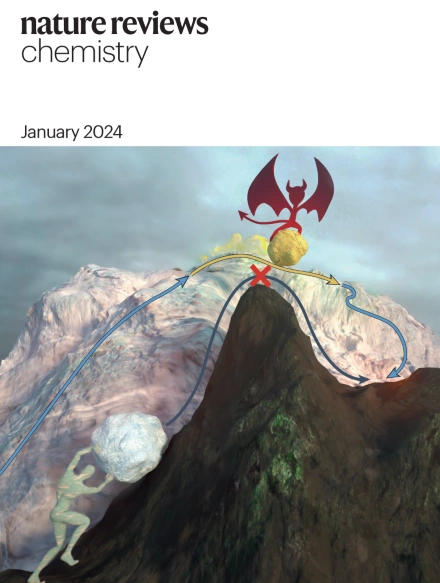过渡金属配合物作为超分辨显微镜的光学探针。
IF 51.7
1区 化学
Q1 CHEMISTRY, MULTIDISCIPLINARY
引用次数: 0
摘要
包括光学超分辨率显微镜在内的一系列技术可以以前所未有的分辨率和对比度水平促进生物结构和生化转化的详细可视化;然而,它们依赖于具有特定生物物理和光物理性质的成像探针。在这种情况下,具有可调谐光激发态和光漂白稳定性的金属配合物是先进成像技术的有希望的候选者。这篇综述阐述了如何通过选择适当的光学性质和发光响应,金属配合物可以用作一系列超分辨率显微镜技术的探针,包括多模态成像,以纳米级分辨率研究亚细胞结构和动力学。讨论了现有分子探针的局限性和挑战。通过强调这些最新的创新和对未来方向的建议,本综述进一步强调了光学探针在推动超分辨率显微镜的边界和促进我们对复杂生物系统的理解方面的重要性。本文章由计算机程序翻译,如有差异,请以英文原文为准。
Transition metal complexes as optical probes for super-resolution microscopy.
The suite of techniques encompassing optical super-resolution microscopy can facilitate detailed visualization of biological structures and biochemical transformations at unprecedented levels of resolution and contrast; however, they depend on imaging probes with specific biophysical and photophysical properties. In this context, metal complexes with tuneable photo-excited states and stability towards photobleaching are promising candidates for advanced imaging techniques. This Review illustrates how, by selecting appropriate optical properties and luminescence responses, metal complexes can be utilized as probes for a range of super-resolution microscopy techniques, including multimodal imaging, to study subcellular architecture and dynamics with nanoscale resolution. Limitations and challenges of the existing molecular probes are also discussed. By highlighting these recent innovations and providing suggestions for future directions, this Review further underscores the importance of optical probes in pushing the boundaries of super-resolution microscopy and advancing our understanding of complex biological systems.
求助全文
通过发布文献求助,成功后即可免费获取论文全文。
去求助
来源期刊

Nature reviews. Chemistry
Chemical Engineering-General Chemical Engineering
CiteScore
52.80
自引率
0.80%
发文量
88
期刊介绍:
Nature Reviews Chemistry is an online-only journal that publishes Reviews, Perspectives, and Comments on various disciplines within chemistry. The Reviews aim to offer balanced and objective analyses of selected topics, providing clear descriptions of relevant scientific literature. The content is designed to be accessible to recent graduates in any chemistry-related discipline while also offering insights for principal investigators and industry-based research scientists. Additionally, Reviews should provide the authors' perspectives on future directions and opinions regarding the major challenges faced by researchers in the field.
 求助内容:
求助内容: 应助结果提醒方式:
应助结果提醒方式:


